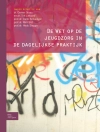This book examines the representation of penal colonies both historically and in contemporary culture, across an array of media. Exploring a range of geographies and historical instances of the penal colony, it seeks to identify how the ‘penal colony’ as a widespread phenomenon is as much ‘imagined’ and creatively instrumentalized as it pertains to real sites and populations. It concentrates on the range of ‘media’ produced in and around penal colonies both during their operation and following their closures. This approach emphasizes the role of cross-disciplinary methods and approaches to examining the history and legacy of convict transportation, prison islands and other sites of exile. It develops a range of methodological tools for engaging with cultures and representations of incarceration, detention and transportation. The chapters draw on media discourse analysis, critical cartography, museum and heritage studies, ethnography, architectural history, visual culture including film and comics studies and gaming studies. It aims to disrupt the idea of adopting linear histories or isolated geographies in order to understand the impact and legacy of penal colonies. The overall claim made by the collection is that understanding the cultural production associated with this global phenomenon is a necessary part of a wider examination of carceral imaginaries or ‘penal spectatorship’ (Brown, 2009) past, present and future. It brings together historiography, criminology, media and cultural studies.
Зміст
Introduction; Charles Forsdick, Sophie Fuggle and Katharina Massing.- Part I. In the Archive: Text, Image, Object.- Chapter 1. Framing New Caledonia: Projection and Policing the
bagne in Australia; Briony Neilson.- Chapter 2. ‘Dancing and discipline, frolics and felonies, punch and punishment, rum and reform’: Queen Victoria’s birthday Party, Norfolk Island Penal Station, 25 May 1840; John Moore.- Chapter 3. Seeing the penal colony
through maps: the remains of the
bagne in French Guiana and New Caledonia; Claire Reddleman.- Chapter 4. The Weather In the Archive: Material Residue and Guillotines on (in the?) Hold; Megan Mac Donald.- Part II. Carceral Landscapes.- Chapter 5. The Life and Afterlife of the old Fængslet at Richmond, St Croix; Laura Mc Atackney.- Chapter 6. Framing the Tiger Cages: French and American Penal Spaces at Con Dao, Vietnam; Maryse Tennant.- Chapter 7. Walking and writing the penalcolony with Patti Smith; Samuel Tracol and Gloria Alhinho.- Chapter 8. Framing postcolonial narratives in the prison museum: The Qingdao German Prison Museum; Katharina Massing.- Chapter 9. Across the Abashiri River: The Prison and the Museum; Sophie Fuggle.- Part III. Reframing the penal colony.- Chapter 10. Sensationalised and didactic? Framing Dieudonné in Green Hell Guiana; Chantal Cointot.- Chapter 11. Graphic histories of incarceration:
bagne and
bande dessinée in New Caledonia; Charles Forsdick.- Chapter 12. Gaming the Penal Colony; Sophie Fuggle and Charles Forsdick.- Postface.
Про автора
Sophie Fuggle is Associate Professor of Postcolonial Studies and Cultural Heritage at Nottingham Trent University, UK, and teaches on the MA in Museum and Heritage Development programme.
Charles Forsdick is James Barrow Professor of French at the University of Liverpool, UK. He has published on a range of subjects, including travel writing, colonial history, postcolonial and world literature, and the memorialisation of slavery.
Katharina Massing is Senior Kecturer at Nottingham Trent University, UK, and Course Leader of the MA in Museum and Heritage Development programme.












